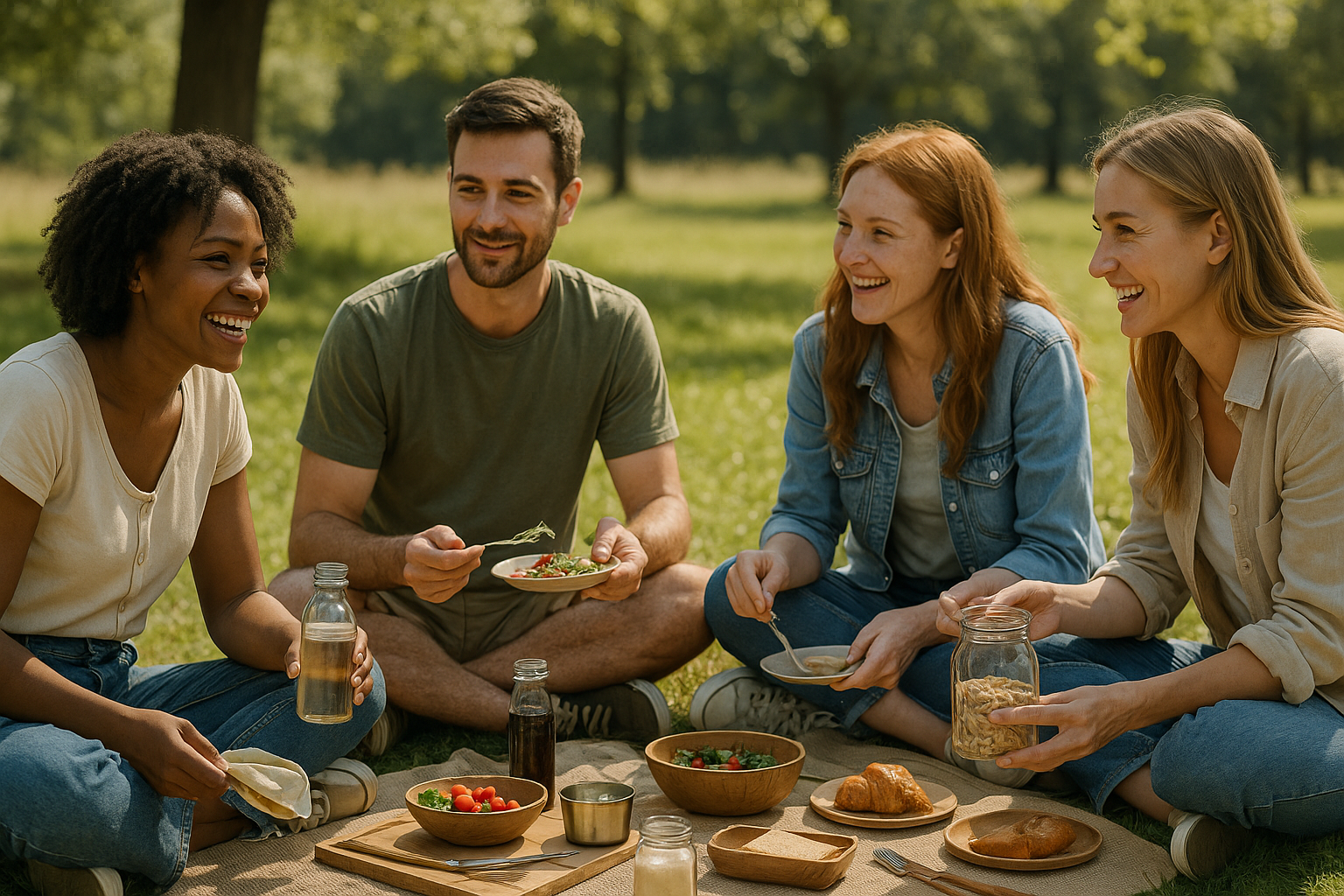There’s something beautiful about enjoying food and community in nature—but many picnics and outdoor events leave behind plastic utensils, wrappers, and food waste. With a little planning, however, you can host a gathering that’s both joyful and low-impact.
This article shares practical tips for creating a zero-waste picnic or outdoor event that respects the environment while still offering style, comfort, and fun.
Why Go Zero-Waste Outdoors?
When we’re outside, we’re often farther from proper waste disposal systems. That makes it even more important to reduce what we bring and ensure everything is reusable or compostable.
Benefits of zero-waste gatherings:
- Less trash left behind
- Lower environmental footprint
- Reduced cleanup time
- Stronger community values
- Beautiful, intentional presentation
Leave nature better than you found it.
Plan With Purpose
Every sustainable gathering starts with a clear intention.
Ask yourself:
- How many people are coming?
- What food and drink will minimize waste?
- Can I avoid disposable plates and utensils?
- Do I have enough containers to bring everything home?
Start small. Even a picnic for two can model conscious choices.
Use Reusables for Everything
Skip the disposables entirely. With a few essentials, you can create a complete zero-waste setup.
Essentials to bring:
- Real plates, cups, and cutlery (metal, bamboo, or enamel)
- Cloth napkins or small kitchen towels
- Water bottles or pitchers
- Mason jars for snacks or drinks
- A large reusable bag or basket for transport
Wrap it all in a picnic blanket or cloth to avoid plastic bags.
Prepare Food at Home
Prepping your own food allows you to control packaging and ingredients.
Ideas:
- Sandwiches or wraps in beeswax wraps or cloth
- Salads or fruit in glass containers
- Homemade snacks like cookies, granola, or roasted chickpeas
- Local, seasonal produce
- Refillable water, iced tea, or kombucha in bottles
Avoid pre-packaged snacks and single-use condiment packets.
Bring a Waste Separation Kit
If you generate any waste, be ready to sort it properly.
What to pack:
- A small compost container for food scraps (can be lidded)
- A recycling bag for cans or bottles
- A cloth bag or box for items to wash later
- A bag for any non-recyclable trash (if necessary)
Label bags or containers so guests know where to put things.
Keep Decor Natural and Simple
You don’t need balloons or plastic banners for charm. Nature is already beautiful.
Sustainable picnic decor:
- Wildflowers in a jar
- Cloth bunting or handmade signs
- Wooden serving boards or vintage trays
- Reused candles in jars
- Leaf or stone place markers
Use what you already have and add a little creativity.
Choose a Responsible Location
Not all parks or beaches have the same guidelines.
- Look for places with recycling and compost bins
- Avoid sensitive ecosystems or overused spots
- Follow “leave no trace” principles
- Respect noise levels and local regulations
- Walk or bike to your location if possible
Connection to place deepens the experience.
Invite Guests to Join the Effort
Make your gathering a shared celebration of sustainability.
- Encourage guests to bring their own containers or utensils
- Share the theme ahead of time: “zero-waste picnic!”
- Offer a quick explanation about how to sort waste
- Celebrate mindful living with gratitude and ease
It’s not about being strict—it’s about being thoughtful.
Capture the Moment, Not the Mess
When the event is over:
- Double-check for forgotten items or trash
- Pack everything up neatly for reuse
- Compost and recycle once home
- Reflect on what went well and what to tweak next time
Sustainability gets easier with each gathering.
Gather With Gratitude
Hosting a zero-waste picnic isn’t about being perfect—it’s about caring. It’s about sharing food and joy in a way that honors the land and the people around you.
By bringing more intention to how you gather, you create not only a cleaner space—but a deeper connection to it.
